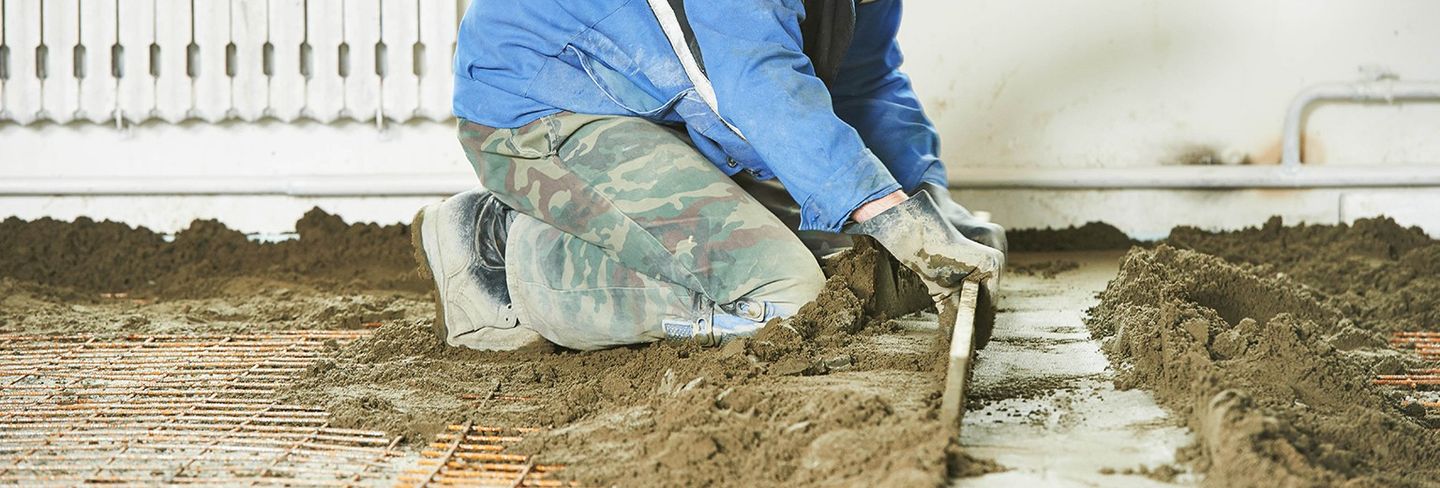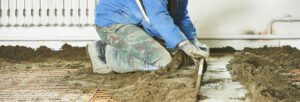Polished Concrete is an excellent choice for a variety of spaces including lobbies, cafeterias, conference rooms, car showrooms, warehouses and more. Its durability and low maintenance costs make it an attractive option.

The process of creating a polished concrete floor involves grinding the concrete surface using progressively finer diamond abrasives. Densifiers are optionally applied for added hardness and stain resistance. Contact Polished Concrete Orange County for professional help.
Concrete flooring used to be associated with basements and garages, but today it is an option for many different types of indoor spaces. Its durable surface is easy to clean and can improve interior air quality by reducing dust and allergens. Concrete can also be enhanced with stains, dyes, aggregates and stamped patterns to create a specific design aesthetic.
Polished concrete consists of multi-stage grinding with progressively finer diamond abrasives to create a lustrous, shiny finish. It can be done to new or existing concrete. It can be used for a wide variety of applications, including retail and office spaces, showrooms and schools.
The reflective surface of polished concrete increases light penetration and reduces the need for additional lighting, resulting in lower energy costs. The material is also highly durable and easy to maintain, making it an excellent choice for high traffic areas.
Airports and train stations often use polished concrete, due to the high amount of foot traffic they receive. The reflective surface helps to brighten these large public spaces and create a sense of openness and cleanliness.
Commercial facilities like banks, warehouses and grocery stores also use polished concrete for their durability and ease of maintenance. The smooth, even surface allows for quick and efficient cleaning, reducing the risk of slips and falls. It also promotes a healthy environment by reducing allergens and bacteria.
While a matte sheen absorbs light and shows dirt, a satin finish offers a medium sheen that’s less shiny than high-gloss. This finish enhances the color of the concrete and is ideal for kitchens, bathrooms, offices and other commercial spaces.
The versatility of polished concrete allows it to be etched, carved and stenciled for custom designs and logos. It is also possible to imbed metals, such as brass and bronze, into the surface of polished concrete. This adds a modern, industrial look to any space.
While stained and polished concrete have some similarities, they are two very different processes. Staining uses acid- or water-based chemical solutions to infiltrate the concrete, resulting in an array of colors and patterns. Polished concrete, on the other hand, requires no chemicals and is achieved through mechanically grinding the surface with abrasives, resulting in a smooth, reflective finish.
Durability
Concrete is a highly durable material and, when polished, it becomes even more dense. This increases its ability to resist scratches, dents, and other damage that can cause problems with other types of floor coverings. This is especially important in areas that experience heavy foot or machinery traffic. Polished concrete is also non-slip and can meet or exceed floor standards set by OSHA. It eliminates the need to wax or strip, which saves money in maintenance costs.
Whether you’re installing polished concrete in your home or commercial space, you can be confident that this is an investment that will pay for itself over time. It’s highly durable, easy to clean, and comes in a variety of attractive finishes. It’s a great alternative to expensive floor coverings like carpet, tiles or wood, and it will last for years.
The durability of polished concrete is influenced by the type of environment it’s installed in and how it’s maintained. High-traffic areas in shopping centers or industrial spaces tend to experience more wear and tear than floors in residential settings. Concrete surfaces can be treated with a protective sealant to further enhance their resistance and longevity.
One of the most significant causes of deterioration for polished concrete is exposure to moisture. This can happen from spills, leaks or other sources of water infiltration. Moisture can cause concrete to expand and contract, which may lead to cracks in the surface. It can also promote the growth of mold in damp environments.
It’s essential to keep in mind that the level of aggregate exposure on a concrete surface can be adjusted, which affects the overall look and texture of the finished product. Using a meter to measure the amount of aggregate exposure helps ensure that the finished product is consistent and matches your design goals.
Choosing a concrete contractor that has the proper equipment and knowledge to perform the job is crucial for achieving your desired results. A professional should be able to recommend the best grinding and polishing techniques for your specific project, as well as suggest ways to maintain your polished concrete surface over time. For example, dust mopping daily to remove abrasive particles and damp mopping with a neutral cleaner can help extend the lifespan of your polished concrete.
Energy Efficiency
Concrete is a traditional building material. Refining and polishing it transforms it into a modern and fashionable flooring option for residential, commercial, and industrial spaces. In addition to offering a sleek and contemporary aesthetic, polished concrete is highly durable and can withstand heavy foot traffic. It is also moisture-resistant, making it an excellent choice for data centers and cold storage facilities. The reflective surface of polished concrete helps maximize natural lighting, reducing energy costs and enhancing sustainability.
Unlike other flooring materials, which often require frequent maintenance, polished concrete is easy to clean and maintain. This reduces the amount of harmful chemicals used in cleaning and minimizes the potential for dust mites, which can cause respiratory issues and allergic reactions. Additionally, the absence of volatile organic compounds (VOCs) in polished concrete promotes a healthier indoor environment.
Since polishing the existing concrete is a process that requires minimal material, it is an environmentally friendly alternative to other materials that require a significant environmental footprint during manufacturing and delivery. By utilizing the concrete that is already on-site, polishing saves money and reduces waste. Additionally, the concrete will not need to be coated with a protective layer, which eliminates the need for additional products such as coatings, toppings or tiles.
The durability of polished concrete makes it an ideal solution for high-traffic areas, as it holds up against heavy equipment and constant use. It is also suitable for industrial facilities that need a flooring material that can withstand the harsh conditions of warehouses, factories, and other manufacturing spaces. The grinding and polishing process strengthens the concrete, making it resistant to scratches, stains, and other forms of damage. This makes it a cost-effective option for industrial spaces, where the floors are constantly in contact with machinery and chemicals.
The thermal mass properties of concrete help to increase the efficiency of heating systems, absorbing and holding heat during the day and then releasing it at night. Additionally, the smooth polished surface allows for even distribution of the heat, reducing the load on HVAC systems.
Maintenance
Concrete polishing is a labor-intensive process that requires the physical effort of cleaning and patching concrete, grinding it smooth with several passes of a diamond grinder, buffing to bring out the shine, and finally sealing. This process is often more expensive than a simple grind and seal, but can provide an elegant look that is also a durable surface for commercial and business locations, showrooms, warehouses and other industrial facilities.
Unlike carpeting, polished concrete does not harbor allergens and other airborne pollutants, making it the ideal choice for those with asthma or allergies. It is a non-porous surface that can also be cleaned with a neutral pH cleaner that does not corrode or damage the floor.
Like any flooring, polished concrete floors require regular care to preserve their appearance and durability. Frequent dust mopping removes dirt and debris from the surface, reducing the likelihood of scratching or dulling the finish. Liquid spills should be cleaned up immediately to reduce the amount of time the material has to seep into the porous concrete and cause staining or discoloration. Harsh chemicals and acidic substances can etch or dull polished concrete surfaces, so it is important to always use a pH-neutral cleaner designed for concrete floors.
Once the concrete has been ground with a range of metal-bonded diamond grits to achieve the desired level of shine, it is typically sealed with a natural-look impregnating polish guard that penetrates 2-5mm into the pores of the concrete and helps to resist staining from oil and spills. The concrete can then be waxed if further protection is required.
Although polished concrete is considered a non-slip surface, it can still become slick if there are microscopic granular materials on the floor, so shoes with soft soles should be worn. Because the floor is a very hard surface, frequent impact from heavy machinery or dropped items can cause chipping and cracking, so it is important to put down a protective mat where possible. Because of its durability, polished concrete is an excellent choice for retail and wholesale spaces that need to be able to support large amounts of foot traffic, but it is not recommended for use in residential settings due to the noise factor.



